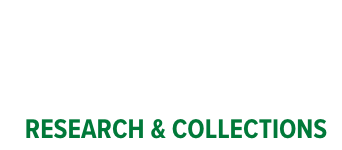Anthropology / Archaeology Collections
The Museum's anthropology collection consists of more than 8 million archaeological specimens and ethnographic objects, and is among the most extensive in the United States. It is housed at the ISM-Research and Collections Center in Springfield and the ISM-Dickson Mounds in Lewistown.
Prehistoric artifacts from over 2,000 sites represent every period of Native American prehistory ranging in age from 12,000 years ago to about 300 years ago. Among the most important collections are those from Modoc Rock Shelter and Cahokia Mounds-one of only two U.S. sites on the prestigious United Nation's World Heritage List. The collection includes outstanding examples of stone tools, pottery, bone and shell tools and ornaments, and sculpted stone pipes.
The Historic-era collections consist of Native American and French colonial and nineteenth and twentieth-century Euro-American artifacts.
The ethnographic collections consist of 5,00 objects from cultures throughout the world. The largest holdings are late nineteenth to early twentieth century Native American baskets, textiles, ceramics, and apparel from the American Southwest, Northwest Coast, and Great Plains. Other major collections include the Frost Trade Bead Collection and the F. Louis Hoover African Collection from Illinois State University.
Policy on Research & Imaging of NAGPRA Collections
The Illinois State Museum (ISM) has implemented a moratorium and prohibits all previously approved, pending, ongoing, and new research and imaging of human remains (including DNA) and cultural objects subject to the Native American Graves Protection and Repatriation Act (NAGPRA) that are reported in the ISM’s inventory to National NAGPRA. The ISM has recalled all loans of collections in its NAGPRA inventory. Consultation is needed on these previously reported holdings, whether under claim or yet to be claimed, to determine repatriation and disposition. In pursuit of its commitment to Tribal Nations, the ISM will engage in meaningful collaboration with Tribal communities and defer to their guidance on these matters.
Creation, publication, and reproduction of images of human remains and cultural objects in the ISM’s control which are subject to NAGPRA is expressly prohibited without written consent from the appropriate Tribal Nations, as determined by the ISM NAGPRA committee in consultation with Tribal representatives. Images include, but may not be limited to photography, drawings, 3D scans, CT scans, X-rays, or other depictions or illustrations of human remains and cultural objects subject to NAGPRA.
Documentation of collections by Tribal representatives and designated ISM staff members to determine NAGPRA eligibility and cultural or geographical affiliation pursuant to NAGPRA is not considered new research under this policy. Any images generated during documentation will be for internal use only and not available to researchers or the public.
More information on NAGPRA is available from the National NAGPRA Program.
Approved by the Illinois State Museum Board of Directors, June 14, 2021.
Anthropology Collections Online
Beginning in 1848, Stephen Allen Frost peddled beads and broadcloth among the Plains Indians as an itinerant merchant. His enterprise lasted longer than that of other traders because of his business acumen and that of his son, Dan. Learn about this collection of 71 trade bead sample cards from the Stephen A. Frost and Son Company and the men behind this interesting company.
Projectile Point Gallery
A type collection of Midwestern Projectile Point types.

